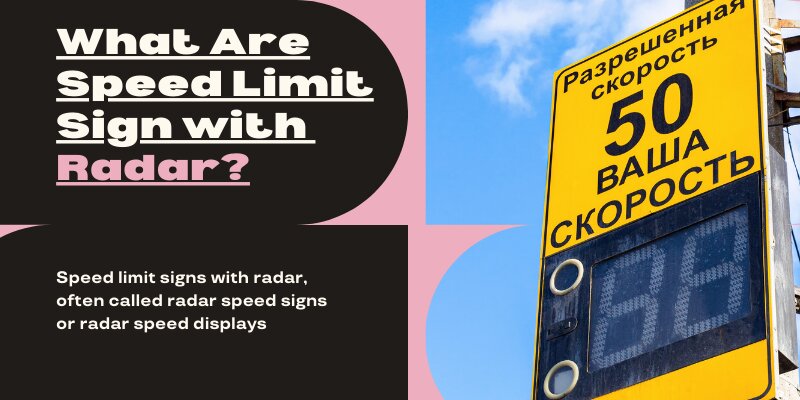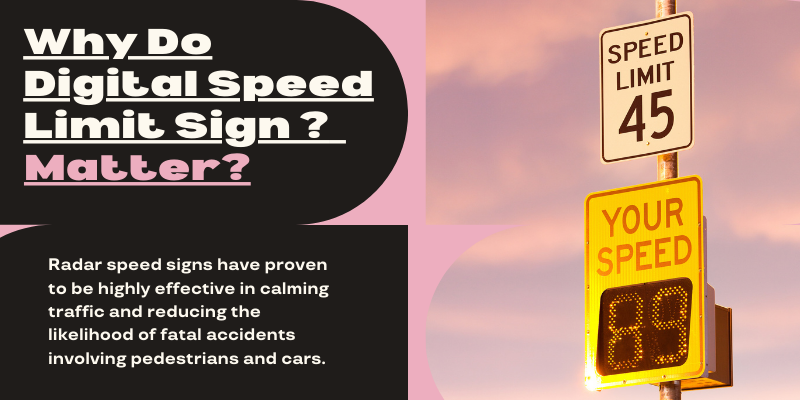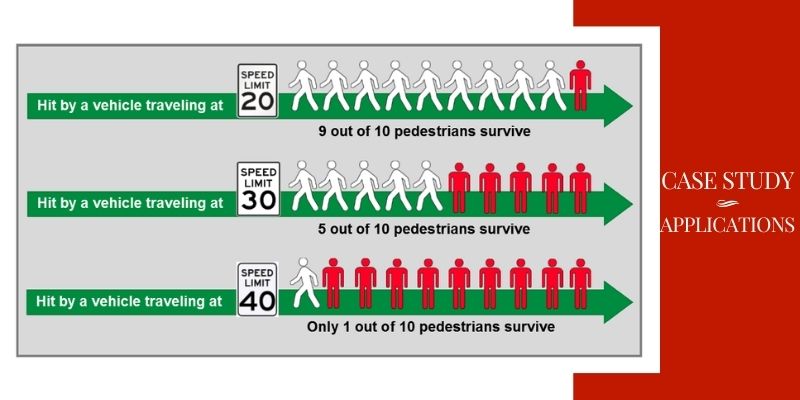Radar Speed Signs are a highly functional product that not only assists traffic management authorities but also helps drivers comply with speed limits. These devices allow operators to provide speed limits to vehicles and if a vehicle is travelling over the speed limit, it will alert the driver of the speeding.
-
What Are Speed Limit Sign with Radar?
Speed limit signs with radar, often called radar speed signs or radar speed displays, are sophisticated devices used to monitor and display the speed of approaching vehicles. At their core, these signs consist of three main components: the radar sensor, the display unit, and auxiliary features such as data logging capability or wireless connectivity.
Radar sensors are typically mounted on or near speed limit signs and transmit radio waves in a specific direction, usually towards oncoming traffic. When a vehicle enters the radar's detection zone, the transmitted radio waves are reflected back and return to the sensor. This phenomenon, known as the Doppler effect, causes the frequency of the returning waves to change in proportion to the vehicle's speed relative to the sign's location.
After receiving the reflected waves, the radar sensor calculates the vehicle's speed based on the frequency shift, using complex algorithms to ensure accuracy and reliability. This speed data is then transmitted to a display unit and presented to the driver in a highly visible manner, usually via an LED display that shows the vehicle's speed.
-
Radar speed measurement mainly uses the Doppler effect principle: when the target approaches the radar antenna, the reflected signal frequency will be higher than the transmitter frequency; conversely, when the target moves away from the antenna, the reflected signal frequency will be lower than the transmitter frequency.
In this way, the relative speed between the target and the radar can be calculated by the change in frequency (when the target is facing the radar, the Doppler frequency is positive, and when the target is facing away from the radar, the Doppler frequency is negative).
To understand the complexity of radar speed limit signs, one must delve into the mechanisms of their operation:
Radar Transmission: Radar sensors transmit radio waves of a specific frequency and wavelength, directed toward the flow of traffic.
Reflection and the Doppler Effect: As vehicles pass through the radar's detection area, the transmitted radio waves interact with them and bounce back toward the sensor. The Doppler effect causes a change in the frequency of the returning waves, which is directly proportional to the vehicle's speed relative to the sign's location.
Speed Calculation: Using the frequency changes caused by the Doppler effect, radar sensors use advanced signal processing algorithms to accurately calculate the speed of approaching vehicles.
Display: The calculated speed is then passed to a display unit and presented to the driver in a clear, easy-to-read format. LED displays typically display the vehicle's speed in large digits to ensure maximum visibility and comprehension.
Feedback Loop: By providing drivers with real-time feedback about their speed, radar speed signs act as a proactive measure, encouraging compliance with posted speed limits and promoting safer driving habits.
Radar speed signs work based on the Doppler effect. These signs are developed in such a way that they transmit radio waves and based on the reflected radio waves from the passing vehicles the radar speed limit signs measure the time between sending and receiving the signal, this time difference is now converted into distance and the process is repeated and the radar speed limit signs calculate the new distance.
-
Why Do Digital Speed Limit Sign Matter?
Your speed radar signs have proven to be highly effective in calming traffic and reducing the likelihood of fatal accidents involving pedestrians and cars. Research consistently shows that slowing down traffic can significantly reduce the likelihood of serious consequences.
For example, if a pedestrian is hit by a car at 40 miles per hour, the fatality rate is as high as 90%, but at 20 miles per hour, the fatality rate drops sharply to 10%. The accompanying figure highlights that even a small reduction in speed can have a profound impact on the survival outcomes of those involved in such events.
Radar speed signs do more than detect speed; they act as fast messengers by displaying high-definition graphics and customized messages such as "Slow Down" or "Work Zone". These electronic signs can also communicate specific community notices or traffic updates.
With a multi-color display of green, red and amber, speed radar signs provide clear, color-coded messaging. In addition, high-brightness flashing lights alert drivers when they are speeding, helping to slow them down and prevent accidents.
-
Real-World Applications and Case Studies of Your Speed Radar Sign
Texas Transportation Institute Study:
Demonstrated a 14% reduction in speeding in school zones.
The positive impact of radar speed signs on pedestrian safety and traffic control is highlighted.
El Paso, Texas Case Study:
Demonstrated average vehicle speed dropped by 3 to 5 mph.
The goal of reducing speeding vehicles in residential areas by 50% was achieved.
Research in Gainesville, Florida:
The report said vehicle speeds near schools dropped by an average of 4 mph.
significantly reducing the number of speeding vehicles by 68%, emphasizing the effectiveness of radar speed signs in promoting safer driving practices.
Speed limit sign with radar have been proven effective in reducing speeding incidents and increasing road safety.
Integrating radar technology into speed limit signs provides proactive measures to control speed limits and improve traffic management.
These signs play a vital role in monitoring vehicle speeds, attracting driver attention, and promoting safer driving practices.
Research and case studies support the significant impact of radar speed signs on reducing average vehicle speeds and improving road safety.
By strategically combining radar speed signs with other traffic calming measures, authorities can minimize speeding violations.
-
Effectiveness and Future Developments
Technological Advancements:
The future of radar speed sign technology promises advancements designed to further enhance road safety measures. Innovations such as enhanced sensor capabilities, real-time data analytics, and connectivity will revolutionize the way radar speed signs operate. These technological upgrades will not only improve the accuracy of speed detection, but also enable more targeted interventions to effectively address specific traffic challenges.
Integration with Other Systems:
The integration of radar speed signs with other intelligent traffic management systems offers a new frontier for optimizing road safety strategies. By incorporating these signs into the wider traffic network, authorities can streamline data sharing, implement dynamic speed control measures, and improve overall traffic flow efficiency. This collaborative approach underscores the evolving landscape of intelligent transportation systems and their role in creating a safer road environment for all users.




